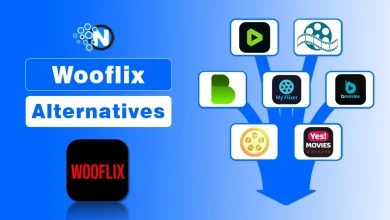Meta Quest 3 vs Apple Vision Pro – Which One Is Better?

Every once in a while, tech gives us a showdown worth talking about, and right now, it is the Meta Quest 3 ve Apple Vision Pro battle.
As someone who has spent hours with both devices, I can tell you it is not just about specs. It is about experience, value, and how seamlessly the hardware blends into your digital life.
If you are on the fence about which one deserves your attention or your money, you are in the right place.
In this article, I will guide you through everything you need to know before making the big decision.
What is Meta Quest 3?
Meta Quest 3 is Meta’s latest standalone mixed reality headset, launched as the successor to the highly popular Quest 2.
Unlike traditional VR headsets, the Quest 3 is not just about gaming. It blends virtual and real-world elements using full-color passthrough, hand tracking, and spatial awareness features. You don’t need a gaming PC or console to use it, which makes it super lgwa lia?
accessible.
I love how lightweight and easy it is to set up. Within minutes, you are fully immersed in a world of games, apps, and even productivity tools. It is Meta’s big step toward affordable mixed reality for everyday users.

What is Apple Vision Pro?
Apple Vision Pro is Apple’s first mixed reality headset, and honestly, it feels more like a wearable computer than a typical headset.
Powered by the M2 chip and packed with micro-OLED displays, this device is all about blending digital content into your physical space. Apple calls it a spatial computer, and I can see why.
It lets you multitask with apps floating in front of you, watch 3D movies in full immersion, and control everything with just your eyes and hands. It is futuristic, premium, and very Apple in both design and performance but it also comes with a steep price tag.

Meta Quest 3 vs Apple Vision Pro
Now that you know what both of these headsets bring to the table individually, let’s compare these latest trends in wearable technology head-to-head. This is where things get interesting.
I have used both extensively, and while they are built for slightly different audiences, they do overlap in a lot of key areas, such as design, display quality, performance, tracking, software, and more. Each shines in certain departments, but also has its limitations.
So, if you are wondering in the Meta Quest 3 vs Apple Vision Pro debate to determine which one fits your needs better, let’s break down their differences in a way that actually makes sense. I will go over each major category to help you see which one truly stands out.
1. Overall Design and Comfort
When it comes to devices that strap onto your face, design and comfort are not just aesthetic bonuses. They are essential for everyday usability.
- Build Quality: I noticed the Apple Vision Pro has a more premium build with aluminum and glass, while the Meta Quest 3 leans towards plastic for weight reduction. Apple’s device feels luxurious, but Meta’s is surprisingly durable.
- Fit and Comfort: The Meta Quest 3 is lighter and more compact, which makes long sessions less tiring. Apple Vision Pro, though sleek, gets a bit heavy after a while, especially if you are using it for extended productivity tasks.
- Portability: Quest 3 clearly wins here. It is wireless and stand-alone, while the Vision Pro requires a tethered battery pack that feels like an extra step when you just want to get in quickly.
2. Display Quality and Visual Experience
This is where things start to get exciting. Both devices promise immersive visuals, but the differences are quite stark.
- Resolution and Clarity: Apple Vision Pro leads the race with micro-OLED displays delivering an insane 23 million pixels in total. It is incredibly sharp. You can even read small texts comfortably. Quest 3’s LCD display is good but not even close in clarity.
- Field of View: Both are decent in this department, but Apple provides a more cinematic experience. The field of view on Quest 3 is functional, more than immersive.
- Color Accuracy and Brightness: Apple wins again. The Vision Pro’s color accuracy, contrast, and brightness are studio-level. It is like viewing through a high-end iPad that happens to be strapped to your head.
3. Tracking and Hand Control
Both devices are pushing boundaries with how we interact with the virtual world. But one of them just feels a bit more refined.
- Hand and Eye Tracking: Apple’s eye-tracking is magical. It knows what you are looking at before you even touch it, which makes navigation feel like second nature. Meta has solid hand tracking, but it is not nearly as responsive or natural.
- Controllers vs Controller-Free: Meta Quest 3 gives you the option of hand tracking or controllers, which I like for gaming. Apple Vision Pro goes controller-free entirely, which feels elegant but limits gaming possibilities.
- Positional Accuracy: Both are very accurate, but Apple’s inside-out tracking combined with eye tracking makes it feel like it is reading your mind.
4. Apps, Ecosystem, and Software
What can you really do once you are inside these devices? The user experience is very important as it decides whether a device can thrive or die.
- App Availability: Meta Quest 3 has a massive library of games and VR experiences. It is built with gamers in mind. Apple Vision Pro, meanwhile, focuses more on productivity, media consumption, and general computing.
- OS and Interface: VisionOS is sleek, minimalist, and very intuitive, especially if you are used to iOS or macOS. Meta’s interface is more focused on gaming and social VR. It is great but less refined.
- Compatibility with Other Devices: Apple Vision Pro plays beautifully with your iPhone, iPad, and Mac. It becomes a seamless part of your Apple ecosystem. Quest 3 is more standalone but less integrated unless you are deep into the Meta ecosystem.
5. Gaming Experience
If gaming is your priority, it would be quite interesting to understand Meta Quest 3 vs Apple Vision Pro comparison. Here is how both devices stack up.
- Game Library: Meta Quest 3 crushes it here. Games like Beat Saber, Resident Evil 4, and Asgard’s Wrath 2 are exclusive gems. Vision Pro, on the other hand, is not focused on gaming and has almost no AAA VR titles.
- Immersion and Feedback: Quest 3’s haptic controllers and spatial audio make gaming deeply immersive. Apple Vision Pro can stream Apple Arcade titles, but the lack of controllers is a serious drawback for real gamers.
- Multiplayer and Social Gaming: Meta has Horizon Worlds and tons of multiplayer games. Apple’s social features are more about FaceTime and productivity rather than real-time VR multiplayer.
6. Productivity and Work Tools
For those thinking beyond entertainment, productivity tools are essential. Apple has made a big bet here.
- Virtual Desktops: Using Apple Vision Pro with a MacBook feels like magic. You get multiple floating screens in AR. It is futuristic and functional. Quest 3 has virtual desktop features too but is less seamless and more limited.
- Multitasking: Vision Pro allows you to open multiple apps side by side, resize them, and move them around in your space. Quest 3 can do some multitasking but nowhere near Apple’s level of refinement.
- Collaboration and Video Calls: Apple offers immersive FaceTime with spatial avatars and screen sharing. It actually feels like the person is there. Quest 3 has avatars too, but they don’t feel quite as natural.
7. Mixed Reality and AR Capabilities
Both devices offer a blend of the real and virtual, but they do it differently.
- Passthrough Quality: Apple’s passthrough is full-color, ultra-high resolution, and low latency. It’s nearly indistinguishable from reality. Meta Quest 3 improved a lot over Quest 2, but the passthrough still feels grainy and artificial.
- Spatial Mapping: Both do room mapping well, but Apple’s depth sensing and LiDAR take it a step further. It understands space more accurately, and makes Augmented Reality interactions smoother and more convincing.
- Use of Real Environment: With the Vision Pro, you can keep an eye on your surroundings without leaving your virtual workspace. Quest 3 allows something similar, but it doesn’t feel as fluid or immersive.
8. Performance and Hardware
Let’s talk raw power. It is where the specs translate into speed and responsiveness.
- Processing Power: Apple Vision Pro is powered by the M2 chip and an R1 chip for real-time sensor processing. It is blazing fast. Meta Quest 3 runs on the Snapdragon XR2 Gen 2, which is very capable but not in the same league.
- Storage Options: Apple gives you options up to 1TB. Meta Quest 3 goes up to 512GB. If you are storing a lot of content, this matters.
- Battery Life: Quest 3 has 2-3 hours of battery life. Apple’s Vision Pro, with its external battery, offers around 2 hours too. You can plug in both, but don’t expect all-day use from either.
Meta Quest 3 vs Apple Vision Pro Price and Value for Money
Now you know the key aspects of Meta Quest 3 and Apple Vision Pro. So, which one is best for you? Before making any decision, I would suggest you understand the pricing structure of both these devices as well.
- Apple Vision Pro Pricing: Starts at $3,499. Yes, it is a jaw-dropper. But you are paying for cutting-edge display, hardware, and the Apple ecosystem.
- Meta Quest 3 Pricing: Starts at $499. Way more accessible. For the average user or gamer, it is hard to argue against the value here.
Apple is betting on the future of spatial computing. Meta is building a fun, affordable gateway into mixed reality. It really depends on what you need today versus what you are willing to wait for. While gaming PCs are also good options for gaming, these VR headsets have ultimate power to impress.
Which One Should You Buy?
I have used both extensively and the choice really boils down to your priorities.
- If you are a gamer, hobbyist, or casual VR user, Meta Quest 3 is the no-brainer. Affordable, fun, and packed with content.
- If you are a creative professional, Apple user, or early adopter of high-end tech, Apple Vision Pro is in a league of its own.
There is no universal winner here. One is a powerful, polished tool, and the other is an entertainment powerhouse that’s friendly on the wallet.
Final Thoughts
These are the details on Meta Quest 3 vs Apple Vision Pro. Choosing between Meta Quest 3 and Apple Vision Pro is not about which is better in a vacuum. It is about what is better for you. One is a premium productivity beast redefining spatial computing. The other is a fun, accessible gateway to immersive VR.
If you are just starting out or focused on gaming, Quest 3 is perfect. If you are ready to invest in the future of work and entertainment, Vision Pro delivers something truly new. Either way, we are stepping into a whole new era of tech, and it is only going to get more exciting from here.
People Also Ask
1. What are Meta Quest 3 vs Apple Vision Pro?
Meta Quest 3 is a budget-friendly standalone VR headset, while Apple Vision Pro is a premium mixed reality device focused on spatial computing.
2. What are Meta Quest 3 vs Apple Vision Pro resolution?
Apple Vision Pro offers a much higher resolution with 23 million pixels across dual micro‑OLED displays, compared to Meta Quest 3’s LCD panels.
3. What is Meta Quest 3 vs Apple Vision Pro comparison?
Meta Quest 3 excels in gaming and affordability, whereas Apple Vision Pro leads in display quality, productivity features, and ecosystem integration.
4. What are Meta Quest 3 vs Apple Vision Pro specs?
Apple Vision Pro features the M2 chip, eye tracking, and 4K-per-eye displays, while Meta Quest 3 uses a Snapdragon XR2 Gen 2 with lower display specs but solid performance.




